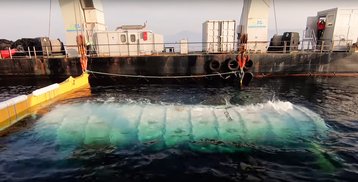Microsoft’s underwater data center initiative, Project Natick, has taken the next step towards commercialization, with a new test installing a small data center in the North Sea.
The company has submerged a shipping container-sized prototype data center off of the coast of the Orkney Islands, Scotland, with the sea’s naturally icy waters expected to provide more than enough cooling for the system.
Sunken treasure
Natick began as a white paper in 2013, starting in earnest the next year. In 2016, Microsoft then ran a three month test off the US Pacific coast, with the ’Leona Philpot’ (named after a character from the Xbox’s Halo) featuring one server rack in an eight-foot (2.4m) diameter cylinder filled with unreactive nitrogen gas.
Later in 2016, at DCD’s Enterprise event in New York, the company said that the test had proved a success and that it would follow up with larger tests - now, in 2018, it appears that Microsoft is ready to do just that.
“Phase 2 of this research project has just begun in the Orkney Islands, where a more eco-friendly data center was lowered into the water,” Microsoft UK chief executive Cindy Rose, said in a blog post.
It “will be left in the sea for a set period of time before being recovered, [and] can hold data and process information for up to five years without maintenance. Despite being as powerful as several thousand high-end consumer PCs, the data center uses minimal energy, as it’s naturally cooled,” Rose added.
The 12-rack cylinder was built in France by a shipbuilding company, Naval, with Microsoft foreseeing future deployments where cylinders are sunk in groups of five - which could be why Microsoft patented artificial reefs made out of data centers last year. The company believes it will be able to deploy these offshore data centers in just 90 days.
The data center, which features 864 servers and 27.6 petabytes of storage, will be connected to land by a cable that provides both a fiber connection and power. That power will come from the European Marine Energy Centre’s tidal turbines and wave energy converters, which generate electricity from the movement of the sea.
Paul Wheelhouse, Scotland’s energy minister, said: “With our supportive policy environment, skilled supply chain, and our renewable energy resources and expertise, Scotland is the ideal place to invest in projects such as this.
“This development is, clearly, especially welcome news also for the local economy in Orkney and a boost to the low carbon cluster there. It helps to strengthen Scotland’s position as a champion of the new ideas and innovation that will shape the future.”

